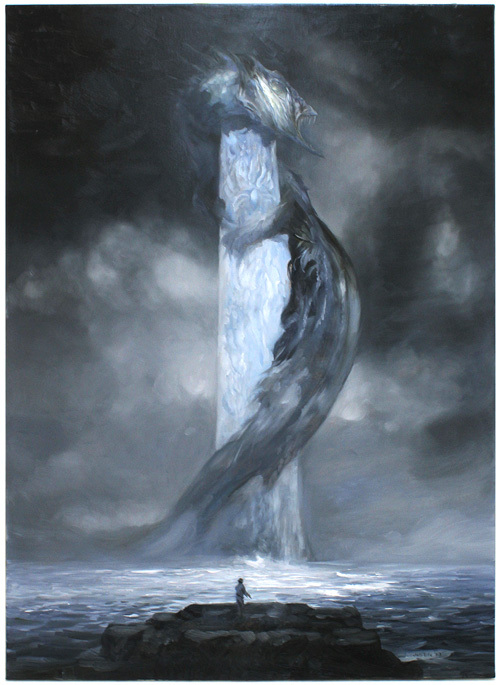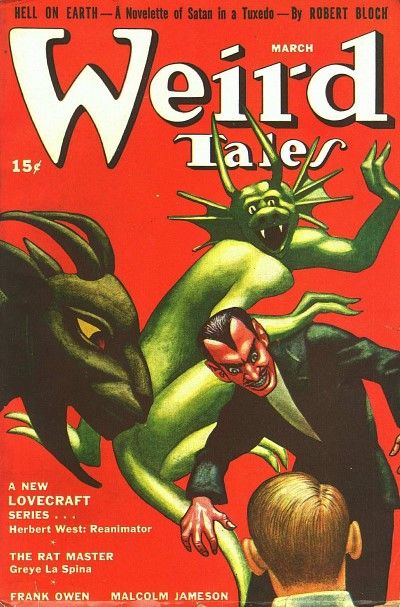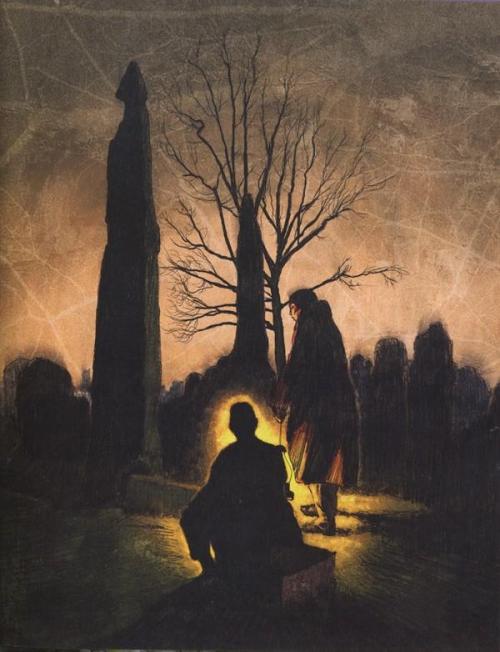 |
| Dagon - 1917 |
The literary career of Howard Philips Lovecraft was a rich, eclectic and remarkable one; latterly celebrated as a period which brought the "Eldritch" genre to the world, but which also was responsible for proffering a singular, almost unique, cosmological vision which has captivated readers for so many, many years. Of course, the most celebrated works of Lovecraft are so often found in those tales and stories which constitute what was latterly known as the "Cthulhu Mythos" - episodes of startling horror, the legacy of arcane and forbidden knowledge and what may lie beyond our understanding, amid mysterious and often terrible deities of old. This number of stories is often intermingled with a notable sub-arc of particularly whimsical, though sometimes frightful and unnerving exploits known as the Dream Cycle, and the strange, uncanny worlds therein.
 |
| The Cats of Ulthar - 1920 |
The period which saw the formation of these particular tales are often celebrated within the wider context of what would come after, and is often seen as Lovecraft's most creative and forthright as regards his cosmological philosophy. The evolution of his narrative perspective gaining considerable momentum from this period - the early to mid 1920's - it has remained intriguing to many to discern this evolution, and the fascinating morphology therein from Lovecraft's emergence after 1917 until his unfortunate death in 1937.
 |
| "Weird Tales - The Unique Magazine" |
His literary career recommending particular delineations, the morphology of his vision can be divided between three essential eras as found between 1917 to 1924, 1924 to 1926 and 1926 to his passing in 1937. The principle forming of the mythos occurring during the years of the middle period - an era which would also see the periodical "Weird Tales" becoming the principle, recognizable host to these stories - it remains that much of what preceded this period is not as reputed or collectively celebrated as his later creations. And yet, as it stands, it was this earlier period of Lovecraft's career which finds the tentative, sometimes abrupt, nascence of his narrative philosophy as it would become better known today among fans, aficionados and researchers alike.
As said, not overly ascribed to a distinct nature or identity, but later situated within his emerging continuity, some of these stories have cultivated much of their own reputations and engendered legacies which resonate to this very day. In the likes of stories as found with "The Rats in the Walls", "Dagon", "The Statement of Randolph Carter", "The Cats of Ulthar" or "The Doom that came to Sarnath", we find vivid, haunting visions which - though latently understood within a particular cosmology - work to impress their readers with a distinct vision of the extraordinary - horrifying, ethereal or otherwise ineffable.
 |
| The Statement of Randolph Carter - 1920 |
Prototypical elements and constituents abounding in such stories, we find the influence of forgotten realms, other worlds, arcane tomes and occult knowledge, other beings dwelling in the extremes of our world and the legacy of strange deities and their powers amid the corners of mankind's domain. From these, and numerous others, we would find the beginnings of the later continuity and who's crystallization in years to come would make Lovecraft such an enduring and remarkable literary figure.
This period, as aforementioned, less collectively known to popular culture, I would like to proffer - in three successive journals - an exploration of this era and the tales which so colored it. To this end, and as has been seen with the more holistic approach to Lovecraft's career, I would like to promote a further sub-division of this time into three phases, roughly congruent with the respective parts of this intended series. In this we would find 1917 to 1920, 1920 to 1922 and 1922 to 1924. Considering the first number of years from 1917 to 1920, a selection of relevant works can be found below for consideration and reflection. Admittedly, it remains that not all of the works which constitute this period of 1917 to 1924 can be promoted here - Lovecraft being quite prolific - though I do believe that this selection is quite emblematic of what I have come to call Lovecraft's "early eldritch". As said, below can be found the stories - audio renditions found on YouTube - as follows with "Dagon", "Polaris", "The White Ship", "The Statement of Randolph Carter" and "The Tree".
Dagon - 1917
A vivid, impelling and haunting vision of Lovecraft's early eldritch which did much to prefigure the cosmological narrative of the later mythos in horrifying discoveries, perilous encounters and fearful glimpses of other worlds. The last testament of a sailor intending to end their life, they relate the legacy of a horrifying encounter after escaping an enemy vessel, during the First World War; a chance discovery at sea which finds the man alone on a blasted isle, ultimately to behold a strange, aquatic idol...
Polaris - 1918
A remarkable and strange story which prefigures the later, more coherent Dream Cycle in its vision, while also introducing the influence of ancient tomes, as found in the "Pnakotic Manuscripts". The distant star Polaris seems to exercise a strange power over a man who finds his life divided: reality hopping between his earthly existence, and among the people of a strange city, at war with its neighbor. But, Polaris is ever watching, though to what ends the man struggles to understand.
The White Ship - 1919
An ethereal, rich and sometimes fearful tale of other worlds as a lighthouse keeper finds himself boarding a mysterious white ship; its captain following the flight of a mystical bird as they voyage on. Visiting and enjoying many remarkable places, understood as islands across an unknown sea, the lighthouse keeper hears of a uniquely promising, mythical land as he urges the captain onward to find find it...
The Statement of Randolph Carter - 1920
Debuting Randolph Carter - the enigmatic ponderer of many later tales - we find him very much the junior to a friend intent on unearthing secrets, long since buried in the vaults of an ancient crypt. The story one of the first to explore furtive researches in the occult and mystical, Randolph and his friend come too to appreciate the consequences of awakening forces sometimes beyond their knowing.
The Tree - 1920
A tale recalling the Gothic macabre, intermingled with the affectations of ancient Greek myth, an ancient olive tree stands in legacy of a tragic friendship between two sculptor-artists of ancient Greece. What follows is a strange account as the lives of both men are touched by the supernatural, and things may not be as they would seem.